What is Sickfile Ransomware?
Sickfile ransomware is a dangerous malware that sneaks on the targeted machine without users’ permission. It is a data-locking virus that is equipped with the latest encryption technology. It encrypts all the (documents, images, videos, audio, backup, database, etc.) and demands ransom for the decryption.
Encrypted files are marked with the “.sickfile” extension. For example, a file named “myphoto.jpg” would appear as “myphoo.jpg.sickfile” after encryption. Such renamed files are encoded and cannot be accessed without the decoder.
It is a variant of VoidCrypt ransomware and generates a ransom note “how_to_back_files.html” after the file encoding. The note contains instructions to contact attackers and payment details to buy decryption tools. Read this guide to learn how to remove this virus and restore your files.
Threats like Sickfile File Virus can get back on your PC if all associated files are not removed. So we advise you to use SpyHunter 5 Anti-malware to automatically detect and remove all threats from your computer at once.
Compatible with: Windows 11/10/8/7 (32 Bit and 64 Bit)
About Sickfile File Virus
It is another nasty file-encrypting malware. This dubious threat is commonly known as the Sickfile File Virus. If you see this infection in your system, then you are in big danger. This harmful virus will silently sneak into your machine and encrypt all your personal files. It will add its own extension to your filename as a prefix and leave a ransom note behind.
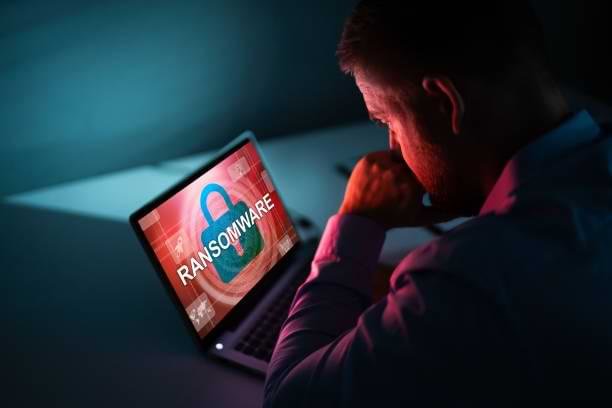
Sickfile Ransomware is a sneaky malware infection. Once inside your computer, it will immediately corrupt all your files. It can disable your anti-virus and firewall security. You will not be able to remove this infection from your system. It will show a ransom message on your computer demanding money through cryptocurrency. It is a tricky situation because you can lose all your files due to this infection. So don’t make any decision in hurry.
.Sickfile File Virus is programmed to force victims to pay the ransom money and buy decryption software. However, there is no guarantee that you will recover all your files. Most ransomware victims get cheated and never get the decryption tools. Do not trust cyber criminals and never pay them money to buy access to your own files. This guide will help you to remove this threat and recover all your data.
How does your PC get infected?
There are several ways through which your system can get infected by Sickfile Ransomware. It often gets spread bundled with free third-party programs available for download on unreliable sites. Spam emails with malicious attachments could also drop this virus on your computer. It is very important to use a custom installation and scan email attachments before opening.
It can also get distributed via other small threats that redirect your browser to suspicious sites which host malicious codes. Trojan horses and malware downloaders can also bring this infection to your PC. Browsing to porn or torrent sites and downloading cracked software or games could bring this virus to your system.
Threat Analysis
| Name | Sickfile |
| Type | Ransomware, File-Encrypting virus |
| Extension | .Sickfile |
| Threat Level | High (Encrypt all your data and Restrict access to your files). |
| Symptoms | Victims cannot access any files on their PC and find Ransom notes asking for money. |
| Damage | Sickfile Ransomware will encrypt your data by adding its extension to file names and demand ransom money for the decryption key |
| Distribution | It is mainly distributed through spam emails, bundled freeware, porn, or torrent sites. |
| Removal | Download SpyHunter 5 Anti-Malware |
| File Recovery | Download Data Recovery Software |
What to do after encryption?
As all your files are encrypted with military-grade encryption and you don’t have the decryption key, you need to get tricky. It is crucial that you do not contact cyber criminals. Remove your infected device from the network and create a backup copy of all the encrypted files on USB drives or cloud drives.
Paying ransom money to Sickfile Ransomware creators will do you no good. It is very much possible that attackers will stop communication after the payment. It is also possible that the decryptor won’t even work or bring more threats. So instead of paying the ransom, invest in a good security program.
Use powerful anti-malware software to completely remove .Sickfile file virus from your PC. It will not recover your files but it will prevent further encryption of data. Later you can recover your encrypted files through Backup files. If you don’t have a backup then try any data recovery software.
How To Remove Sickfile File Virus
Follow this guide carefully to remove this virus completely from your system. Below you can find step-by-step instructions on how to effectively get rid of this nasty threat easily. Removal of threats like Sickfile Ransomware is never easy, so we have simplified the process for you in several small steps.
Quick Summary of Removal Instructions:
- Remove Sickfile Ransomware with SpyHunter
- Manual Sickfile Ransomware Removal Guide
- Start PC in Safe Mode With Networking
- Kill Malicious Process From Task Manager
- Uninstall Sickfile File Virus from Control Panel
- Remove Sickfile File Virus From Registry Editor
- Remove Sickfile Ransomware via system restore
- How To Decrypt .Sickfile Files
- How to prevent malware attacks in future
Please Bookmark This Page by pressing the {ctrl+D} button or print it out on paper before you start the removal process because you may need to restart your PC or browser.
Remove Sickfile Ransomware with SpyHunter
Removing threats and viruses manually from a computer can be hectic but SpyHunter 5 Anti-Malware can make this task much simpler. It can help you find and delete all kinds of threats like Trojans, Ransomware, Spyware, Adware, PUPs, etc. easily from your PC. You just have to install the application and run a new scan on your PC.
It will easily find Sickfile virus and all other hidden threats and remove them efficiently in no time. You will also get 24X7 customer support and Custom Malware removal via one-on-one Spyware HelpDesk support. SpyHunter can block threats in real time via its advanced System Guard feature. It is compatible with your anti-virus application and fills the security gaps to provide the best protection.
How SpyHunter 5 Anti-Malware Works
- First, you will need to download the SpyHunter Installer on your computer. The below download button will take you to the download page in a new tab, so this guide will be still accessible to you.
Threats like Sickfile File Virus can get back on your PC if all associated files are not removed. So we advise you to use SpyHunter 5 Anti-malware to automatically detect and remove all threats from your computer at once.
Compatible with: Windows 11/10/8/7 (32 Bit and 64 Bit)
- The SpyHunter-Installer.exe file will get downloaded on your PC. Run the installer via a double-click to start the installation and follow the instructions to complete the setup.

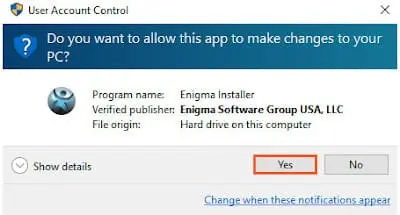
- Launch SpyHunter 5 Anti-Malware after the installation if it does not automatically starts. Now you will have to click on the Start Scan Now button to detect all hidden threats and viruses on your PC.
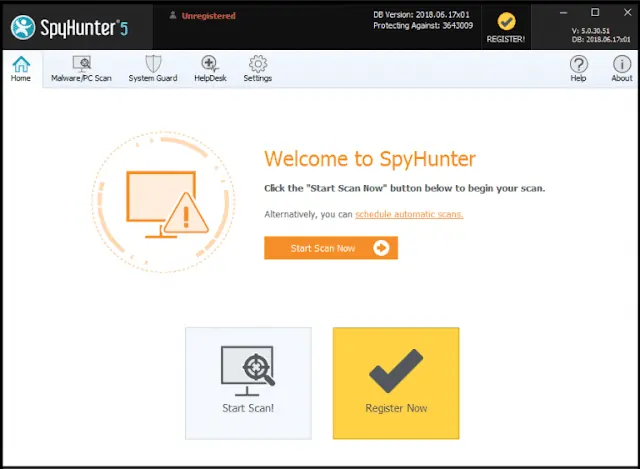
- Once you start scanning your system, wait for a few minutes. The software will run a thorough diagnostic of your PC and give you a detailed report of all the threats found on your PC.
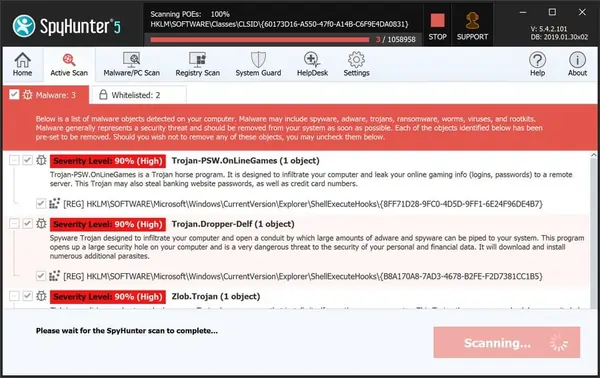
- After the scan, a complete list of all threats will be shown to you. Finally, you will just have to click on the Next button to immediately remove all the threats at once.
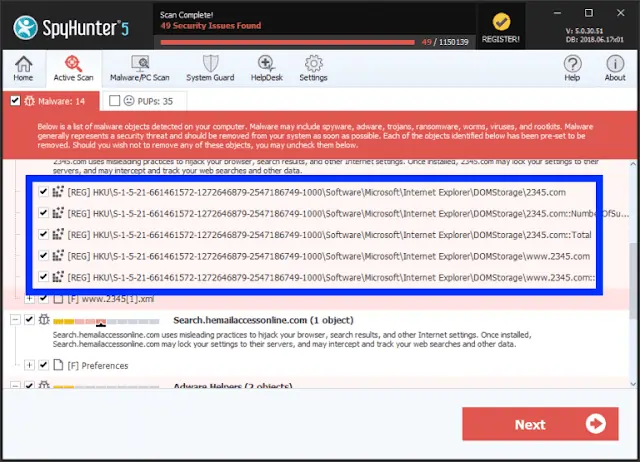
Manual Sickfile Ransomware Removal Guide
Attention! For the safety of your system, please confirm a few things before you begin manual removal:
- You have done this before, which means you have experience in removing the virus manually;
- That you know your way around the PC and all necessary processes and applications;
- You know about Registry entry and the Serious repercussions of any mistake;
- Make sure you can reverse any mistake made during virus removal.
If you don’t attain any of the above standards, then manual removal could be a very risky idea. It is most likely best for you to use the SpyHunter 5 Anti-Malware which is totally secure and efficient method.
SpyHunter 5 Anti-Malware offers a 7-day fully-functional Free Trial. Credit card required, NO charge upfront. No charge if you cancel up to two business days before the trial period ends. Read SpyHunter 5 Review, and Free SpyHunter Remover details.
Start PC in safe mode with networking
- Click on the Windows and R keys together on your keyboard to open the Windows Run Box.
- Now you will need to type in MSConfig and then click the OK button.
- The System configuration settings box will appear on your computer screen.
- Click on the Boot tab, check the Safe Boot option, and select the network box,
- Finally, you will have to click on Apply and then press the OK button.

Kill Malicious Process From Task Manager
- Open the Windows Run box again on your PC by pressing the Windows and R keys together on your keyboard.
- This time you will have to type in taskmgr and then click the OK button to open Windows Task Manager. Look for any unknown or malicious running on your system.
- Select the process which is taking lots of systems resources and then click on the End Task button.
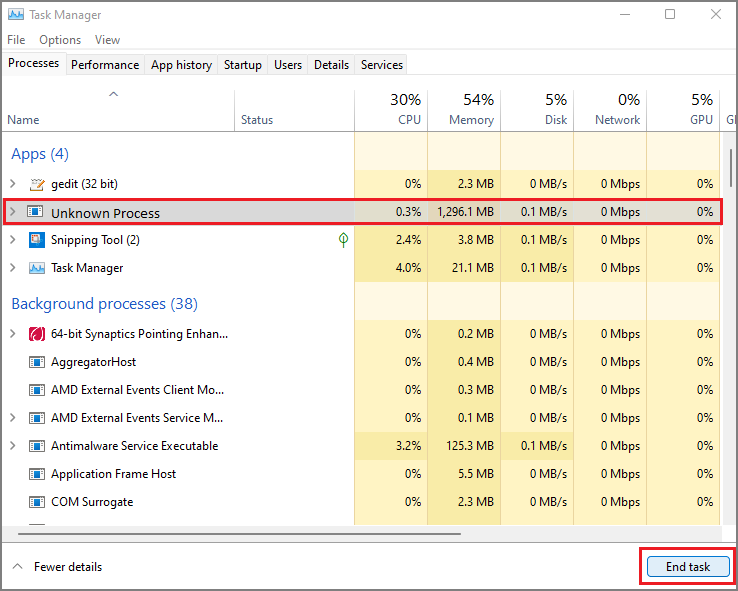
Uninstall Sickfile File Virus from Control Panel
Threats like this can act as an application and hence it is important to track and remove programs associated with it. It may not be easy because the program in your control panel may have a different name. You need to identify any unknown or suspicious application that you have not installed yourself.
- Open the Run command on your PC by pressing the Windows key and clicking on the R button simultaneously.
- You will see the Windows Run Box instantly on your system screen.
- Type appwiz.cpl in the open command of the run box and press OK.
- It will take you to the Programs and Features page where you can see the list of all installed programs.
- Look for any suspicious program that may be related to the virus, select it and click on the Uninstall button.
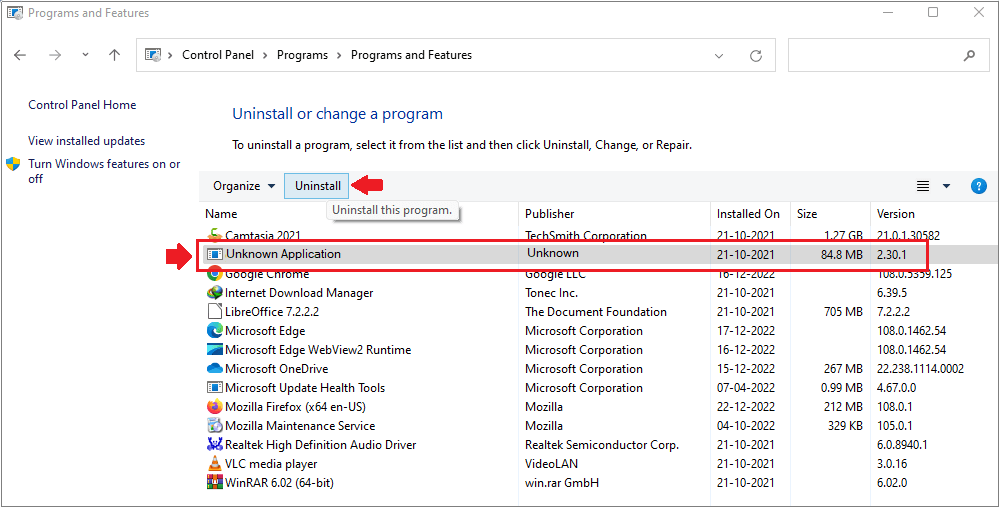
Remove Sickfile File Virus From Registry Editor
- Again open the Run Box by pressing the Windows and R keys at the same time on your keyboard.
- To access the Windows Registry Editor type regedit into the run command and press OK.
- Now you need to find and remove malicious registry entries created by the virus on your PC.
- Press CTRL and F keys together to start the Find query in the registry editor window.
- Make a search by typing the name of the virus and remove malicious entries.
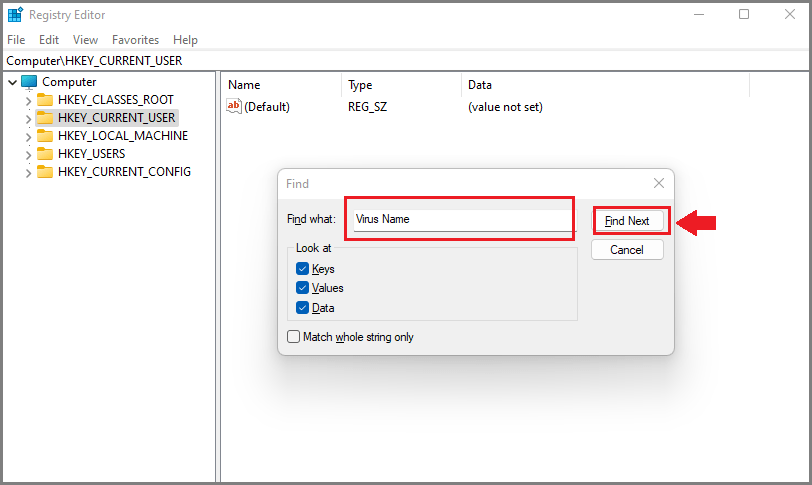
Warning: Removing the wrong Registry files can corrupt your entire computer system instantly. We advise you to use SpyHunter 5 Anti-malware to automatically detect and remove all threats from your computer.
Compatible with: Windows 11/10/8/7 (32 Bit and 64 Bit)
Remove Malicious IP addresses from Windows Hosts Files
- To open the Windows hosts file, simply press the Windows and R keys together on the keyboard.
- Type C:\Windows\System32\drivers\etc in Run Box and then click the OK button.
- Now you will need to access the Windows hosts file using Notepad.
- Most threats add malicious IP addresses here to automatically connect to remote servers.
- Delete all the malicious IP addresses below the localhost and save the file.
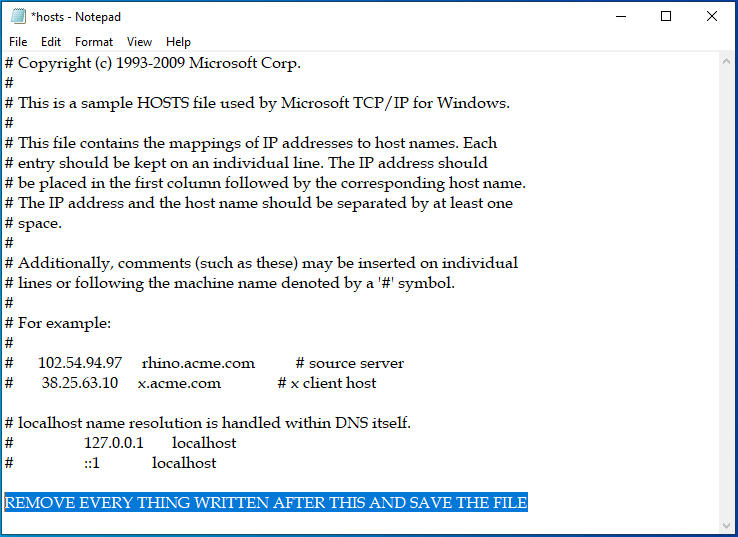
Delete Virus related files from your PC
When any program gets installed on your PC, some files get created at different locations on your PC. The same happens with malware and these files can help the infection get back to your PC after removal. You need to delete all these files at once from your PC to get rid of the virus permanently. Follow the below instructions to remove files related to Sickfile Ransomware:
- Access the Windows Run command by pressing the Windows and R button at once on your keyboard.
- Paths to some system locations are mentioned below, open them using Run Box and delete malicious files.
- %AppData%
- %LocalAppData%
- %ProgramData%
- %WinDir%
- %Temp%
At the first four locations, find and remove any unknown or suspicious folder recently added. They may be created by the virus and may have different names. You can delete all the files from the Temp folder. Use Ctrl, Shift, and Delete keys together for permanent removal or remove the files from the Trash.
Remove Sickfile Ransomware via system restore
- Search for the Command Prompt on your computer and run as Administrator.
- Type cd restore in the command line and click the Enter button.
- Again type rstrui.exe in and then hit the Enter button.
- It will open the System Restore window on your computer screen.
- To Restore system files and settings you will need to click the Next button.
- Choose a System Restore point from the list and then press the Next button.
- Finally, press the Yes button to start the system restoration process.

Note: You will need a System restore point for this step to work successfully. You cannot revert back your system to a prior state if you don’t have the restore point. No changes will be made to your system and it will not remove any malware. However, threats like this can also delete your restore points, so don’t get disappointed.
How To Decrypt .Sickfile Files
Sickfile Ransomware decryptor is not available right now so you will need to get creative to restore your data. We advise you not to contact attackers to buy decryption tools. You can get back your files by using the data backup. After removing the threat you can easily restore all your files from your backup. In case you don’t have backups or your backup files also get encrypted, you can try data recovery software.
We recommend Stellar Data Recovery software because it is a powerful and trusted data recovery software. Paying ransom money is not ideal because it will only motivate hackers to carry out more attacks. You can wait for any free decryptor to be launched but it can take forever. Download the free trial version of data recovery and scan your PC for files. It may be able to recover some of your files and save you lots of money.
- Click on the below download button to get started instantly with the data recovery process on your PC.
Download Data Recovery Software Now
- After the download click on the installer file and complete the software installation. Then launch the application and select the Data type to recover, and click the Next button.

- After the selection of data, you will need to select the location from where you want to recover data. Choose the location and then click on the Scan button.
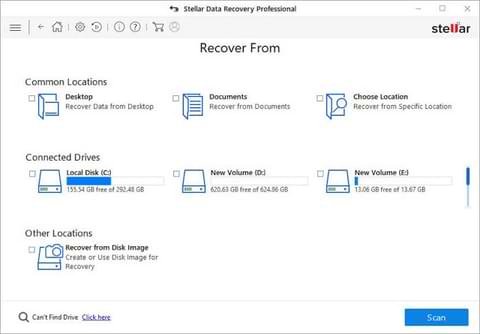
- The software will take some time to scan your system. You will see a list of all the files that can be recovered. You can preview them or click on the Recover button to save them.
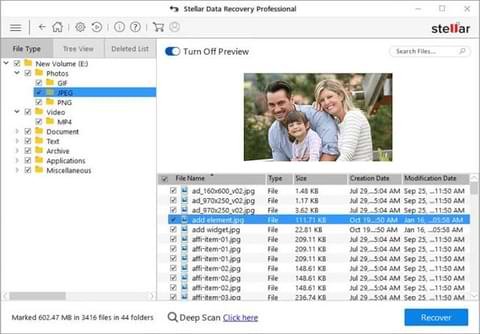
How to prevent malware attacks in future
- Use a powerful Anti-Malware or Anti-virus program. Also, keep your security program updated to fight against the latest threats. Free Anti-virus does not offer the best protection and fails to remove dangerous threats. Do not look for cracked security programs or they will do more damage than good.
- Keep your Windows OS and other programs up to date. Updates are often launched to patch vulnerabilities that cybercriminals use to attack computer systems. So always keep your OS and programs updated. Only download updates from official sites or reliable sources.
- Only visit secured websites. Check the HTTPS and padlock icon before entering your email, password, credit card details, etc. into any site. Do not visit sites that do not have SSL security. Also, don’t forget to Enable Phishing and Malware protection in Browser.
- Do not download pirated software, games, or illegal patches. Avoid using shady sites to acquire freeware programs because they often use software bundling. Never install a program that asks you to inactivate your anti-virus software. Always choose the advanced or custom installation to avoid bundled malicious applications.
- Avoid opening spam emails from unknown senders. Cybercriminals often use spam emails to spread malware online. Always scan all the email attachments before opening them. Do not click on any link that is giving some unbelievable offer or some paid stuff for free. It can be a scam to infect your computer or steal your data.
- Stay away from unsafe free Wi-Fi. Connecting your PC or mobile devices to unsafe public Wi-Fi is not a good idea. Unsafe Internet connections can expose your device security and your privacy. You can also avoid unwanted threats coming from malicious sites by using a VPN to spoof your connection.
- Back up your personal files and data. Keep regular backups of all your important data on external hard drives or cloud drives to avoid data loss in case of a ransomware attack. Also, create a system restore point on your system for security purposes. Ransomware attackers demand lots of money for decryptors, but if you have backup files you can easily restore all your data.

Leave a Comment